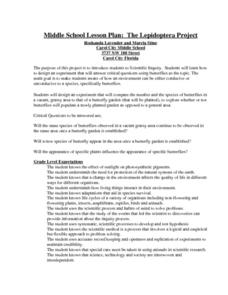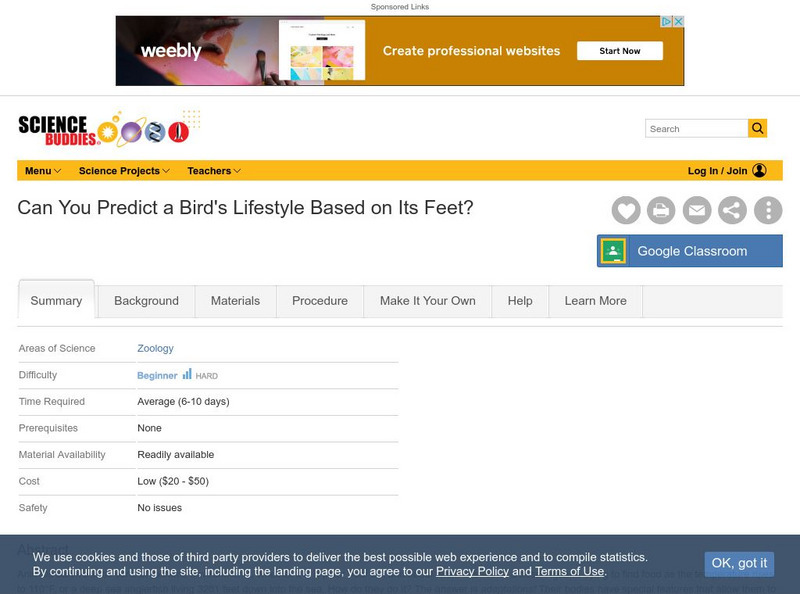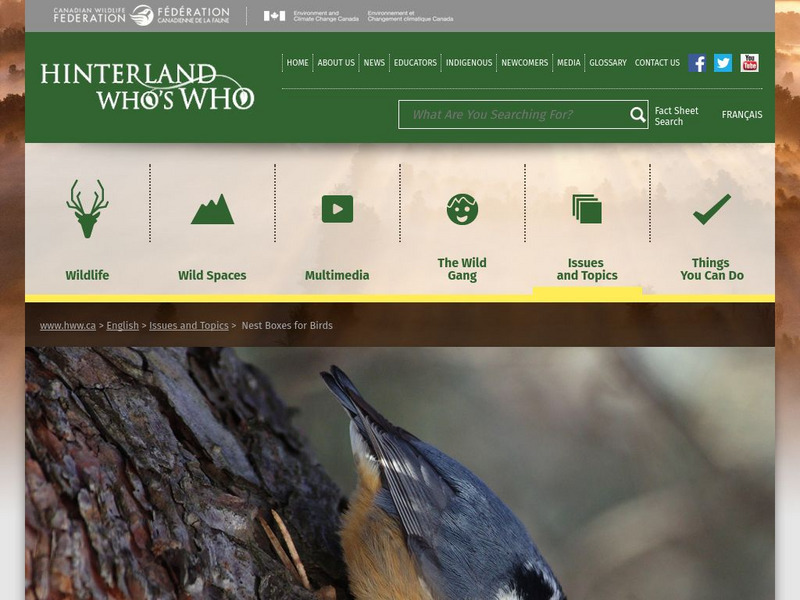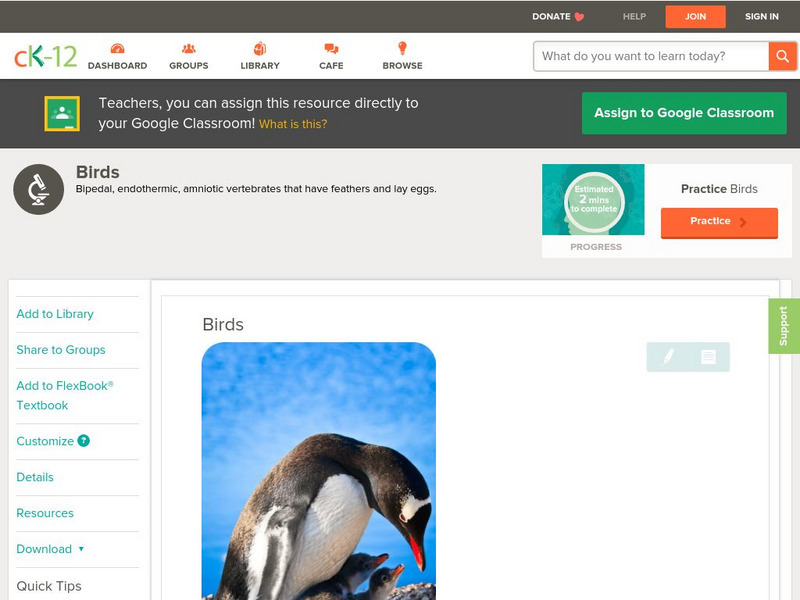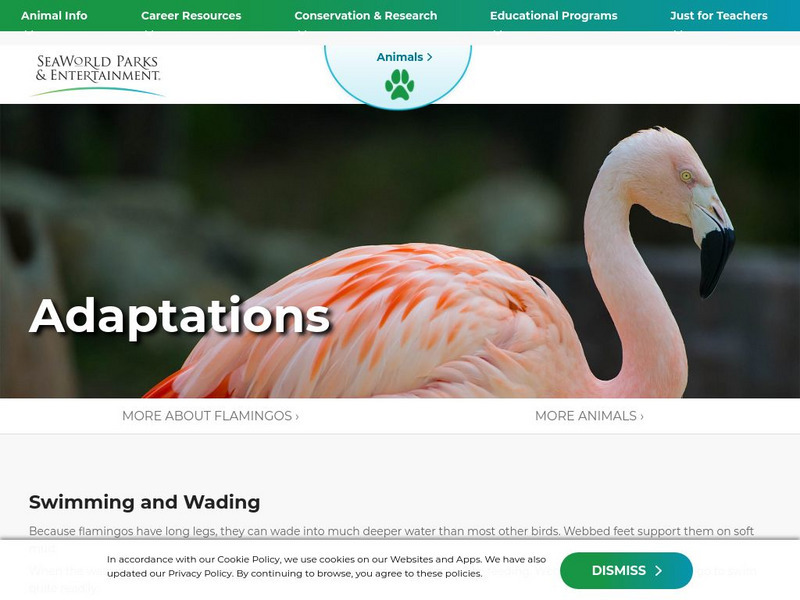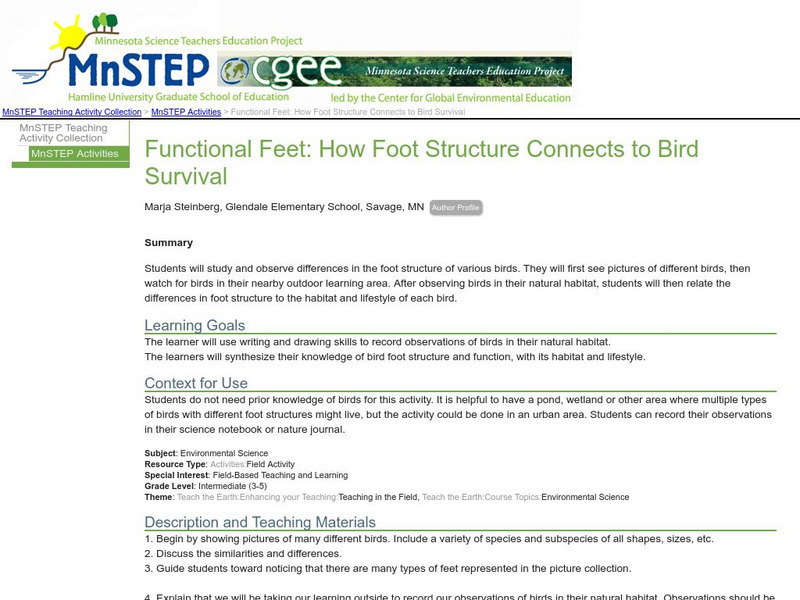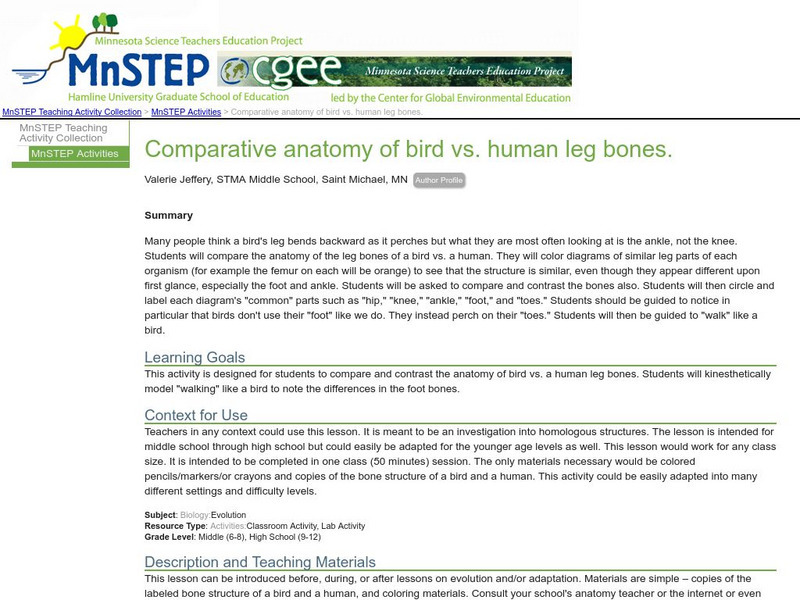Curated OER
In Your Own Backyard
Students observe organisms in their habitat and record their observations. They then draw conclusions about the organism's habitat needs and food sources.
Curated OER
Come to Mommy
Fourth graders participate in a simple experiment to illustrate the concept of mother bats identifying their young. They sniff stickers in order to imitate the behavior of mother bats in the wild.
Curated OER
The Lepidoptera Project
Students are introduced to Scientific Inquiry and discover how to design an experiment that answers critical questions using butterflies as the topic. They design experiments that compare the number of species of butterflies in a vacant,...
Curated OER
Mongolia: Land, History and Culture
Students examine the land, culture and history of Mongolia. In groups, they use the internet to determine what groups held power and during what time periods. They also identify the most important parts of their culture and why they...
Curated OER
Water Quality Monitoring
Students comprehend the four parameters of water quality. They perform tests for salinity, dissolved oxygen, pH and clarity or turbidity. Students comprehend why scientists and environmental managers monitor water uality and aquatic...
Curated OER
Biology and the Digital Atlas
Students participate in a scavenger hunt on the internet. Using a digital atlas, they find answers to specific questions related to plants found in Idaho. To end the lesson plan, they share their results to the class to discover what...
Curated OER
Chasing El Nino
In this El Nino worksheet, students review this specific change in the climate cycle by completing 20 short answer questions.
Curated OER
Sounds Around
In this sounds worksheet, students choose one of five activities to do at home with parents. Students experiment with making sounds with natural objects, list "noisy" foods or count all the outdoor sounds that can be heard.
South Carolina Educational Television
Know It All: Bird Adaptations
Fourth graders will engage in a project-based learning lesson to discover how beak adaptations affect what birds eat.
CK-12 Foundation
Ck 12: Life Science: 10.18 Bird Diversity
Learn about some of the bird adaptations that help birds survive.
PBS
Pbs Learning Media: Bird Food and Bird Beaks
There are almost as many types of bird beaks as there are types of food that birds like to eat. This collection of images shows a wide range of beaks and the types of foods handled by each.
PBS
Pbs Learning Media: Bird Beak Gallery
This collection of images of ten different birds illustrates the diversity of bird beaks.
Smithsonian Institution
Smithsonian Learning Lab: Looking at Bird Beaks
Use this activity as an introduction to adaptations. Students will view video clips of birds and formulate their own observations and explanations for the different types of bird beaks and how they are used.
Science Buddies
Science Buddies: Can You Predict a Bird's Lifestyle Based on Its Feet?
Animals have special features that allow them to adapt to conditions in certain environments. You might not be able to dive down 3281 feet to observe the deep sea anglerfish, but in this science fair project you can discover what the...
Canadian Wildlife Federation
Hinterland Who's Who: Nest Boxes for Birds
At least fifty different types of birds in Canada nest in cavities. This being said, these birds can adapt to nesting in nest boxes, which is a good thing since many of these birds? natural nesting sites are diminishing. Learn how to...
CK-12 Foundation
Ck 12: Life Science: Birds
[Free Registration/Login may be required to access all resource tools.] There is an amazingly wide variety of birds. Birds are vertebrates. Almost all have forelimbs modified as wings, but not all birds can fly. Learn more about birds in...
San Diego Zoo Global
San Diego Zoo: Birds
This resource provides detailed information about birds, as well as several pictures.
Utah Education Network
Uen: Nhmu: Birds Will Be Birds
Analyze the physical characteristics of 12 different birds and consider how this enables them to survive in their individual habitats.
Other
Project Beak: Adaptations: Build a Bird
Build a bird by choosing specific structures to match the environment, then see how you did by calculating the survival rate.
Sea World Parks & Entertainment
Sea World: Flamingos: Adaptations for an Aquatic Environment
Sea World's provides users with this comprehensive site about flamingos. Contains information on adaptations for their aquatic environment.
Smithsonian Institution
Smithsonian National Zoo: Bird Bill Matching Game
Can you identify the purpose of different bird beaks? Read up about the different types of beaks and then you'll apply your knowledge by identifying the purpose of different shaped beaks.
Science Education Resource Center at Carleton College
Serc: Functional Feet: How Foot Structure Connects to Bird Survival
Young scholars study and observe differences in the foot structure of various birds by studying pictures, and then observing the birds themselves. After observing birds in their natural habitat, students then relate the differences in...
Science Education Resource Center at Carleton College
Serc: Comparative Anatomy of Bird vs. Human Leg Bones
This activity is designed for young scholars to compare and contrast the anatomy of bird and human leg bones. Students will kinesthetically model walking like a bird to note the differences in the foot bones.
TeachEngineering
Teach Engineering: Adaptations for Aeronautical Engineering
This activity first asks the students to study the patterns of bird flight and understand that four main forces affect the flight abilities of a bird. They will study the shape, feather structure, and resulting differences in the pattern...
Other popular searches
- Adaptations of Bird Beaks
- Science Bird Adaptations
- Animal and Bird Adaptations
- Baby Bird Adaptations
- Bird Adaptations Behavior
- Bird Adaptations Behaviour
- Bird Adaptations Galapagos
- Adaptations Bird Beak




